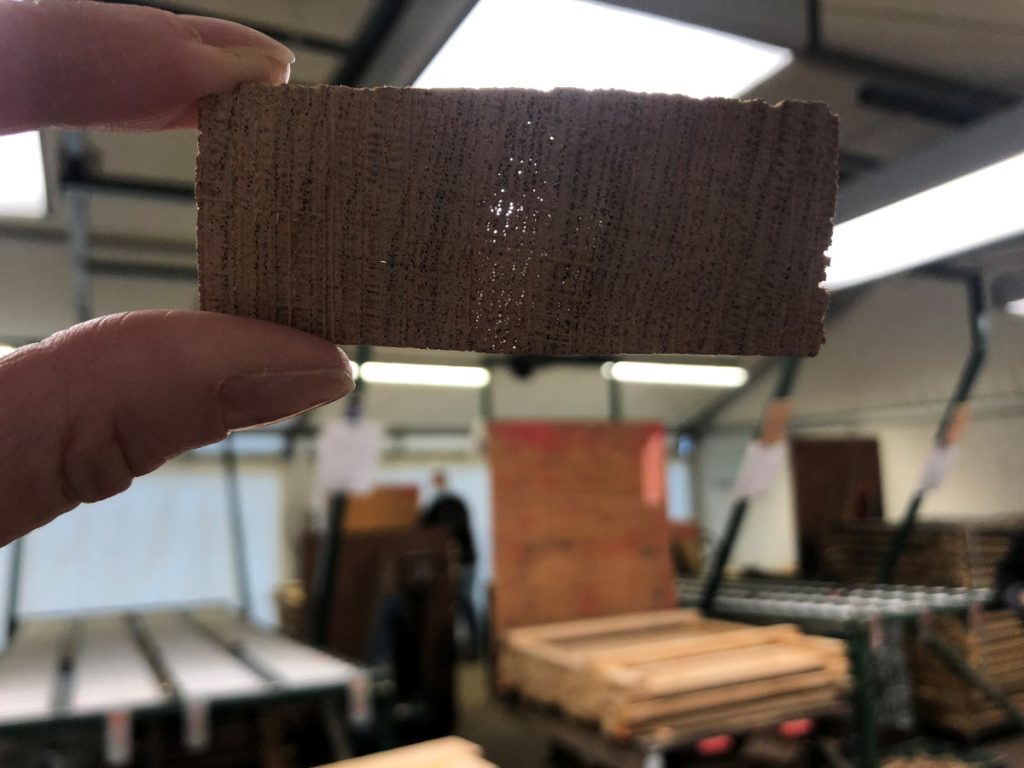From Forest to Barrel, and How Oak Influences Wine
Release Date: April 10, 2025

Photo taken and provided by: Gina Shay
Did you know that it takes between 105 and 180 years before a tree is harvested for a wine barrel? No? Neither did we! As we continue our conversation with Gina Shay, Sales Representative for the Greater USA and Canada through Trust Cooperage, Gina explains to us how wine barrels are made: from tree to barrel. We also get a thorough explanation on why those grain differences matter and how flavor changes based on the cooperage. Once the barrel is made, Gina gave us details on how winemakers can best approach barrel selection for their wines. Plus, Gina finally answers the question for us that we get asked every year: is there gluten in wine that comes from wine barrels?
In case you missed our discussion with Gina Shay regarding her background and careers in the oak industry, please listen to Episode 13: “I Wanted to Sell Oak Full Time”: Gina Shay and Her Oak Industry Perspectives.
Links for things mentioned in this episode:
- Trust Cooperage
- Instagram (@trustcooperage)
- LinkedIn (Trust Cooperage)
- Facebook (Trust Cooperage)
- Gina’s Blog Site, which shares stories about being an industry supplier, a photo guide on how barrels are made, and up-to-date information on barrels and products.
- Instagram (@ginashay1)
- LinkedIn (Gina Certa Shay)
- silviculture – the growing and cultivation of tree.
- Age of oak that is harvested for barrels: Between 105 – 180 years old
- Explanation of “wood grain tightness” from Texas A&M
- Gina’s photo, above, shows the cross section of a stave (Extra Fine Grain French Oak) – it’s see-through! French oak rings and pores are spaced closer together, which allows for more oxygen exchange compared to American oak.
- Seasoning takes 2 – 5 years to reduce tannin. Seasoning conditions can change the effects on the wood. In turn, this has an effect on the oak barrel flavor influences on the wine.
- The rose shape is when the barrel begins to take the form of barrel.
- A bending fire is used to bend the wood, without breaking it, into the shape of a barrel.
- Toasting Fires: Light, Medium, Medium +, and Heavy Toast (plus some proprietary toasting levels)
- Heads are the end of barrels.
- Finishing hoops are galvanized stainless steel hoops that keep the barrel held together once it is built.
- “Building Oak Wine Barrels” video from France: https://www.youtube.com/watch?v=QtbZWLuuFGE
- Is there glue in the barrel? Potentially, yes, barrels can contain a flour-pasted that is filled in an etched interior in the head so that the head can fit in perfectly in the barrel. Theoretically, the glue should not come in contact with the wine. However, wineries can order gluten-free barrels. Trust Cooperage does not use the flour paste to seal their barrels.
- Neutral oak: barrel has been used for 5+ years or more. Getting primarily oxygen exchange and mouthfeel effects from barrels as opposed to flavor from the toast.
- New to oak and need to make oak decisions for your winemaking program?
- Here are the questions to ask yourself:
- What is the style of wine you are going for?
- Who is the target audience?
- What are the retail and wholesale price points you are trying to achieve?
- Who are you selling the wine to and how?
- Once you have those questions asked, you can design your cellar and barrel program around what you are hoping to achieve.
- Here are the questions to ask yourself:
Thank you for listening to another delicious episode of Voices of the Vine. You can find show notes for our episodes by subscribing to the DGW Sip & Swirl, or by visiting the Sip & Swirl Archive, both available at dgwinemaking.com/winelovers. That’s dgwinemaking.com/winelovers with an “s” at the end.
We love to talk about tasting wine on this podcast. Please remember that our podcast is about wine appreciation and education, but that we both support and encourage responsible alcohol consumption. Additionally, both of us are winemaking professionals, so we do not get paid for tasting wine. All opinions expressed here on our podcast are those of ours alone.
Today’s episode is produced, researched, and hosted by both Denise Gardner and myself, Virginia Mitchell. If you enjoyed today’s episode, we’d love for you to subscribe to Voices of the Vine on your favorite podcast platform. Plus, listener reviews go a long way for podcasters. If you could leave us a review on your platform of choice, we’d truly appreciate it.
Thanks for listening.

